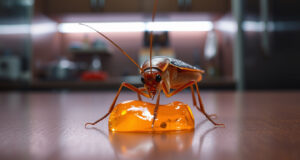
In today’s world the need for a clean environment grows. Gardeners and farmers turn to integrated pest management (IPM). IPM saves crops and nature. It cuts the use of harmful chemicals. This article breaks down IPM and shows ways to run pest control on your land.
What is Integrated Pest Management?
IPM brings methods to control pests as a whole. It mixes biological, cultural, physical, and chemical actions. Pesticides alone do not work well here. IPM builds on knowing pest life cycles, watching pest numbers, and using pests’ own enemies. The goal stays clear: keep pests low while also caring for nature, human health, and other life.
Key Principles of Integrated Pest Management
-
Identification
First, find and name the pests and their friends. This step makes plans sound. -
Monitoring
Watch pest numbers and plant health on a regular basis. See them with your eyes or catch them with traps. This step cuts the chance for big pest problems. -
Thresholds
Set points when pests need a fix. Knowing these points can stop extra chemicals. -
Prevention
Use acts that stop pest attacks. Rotate crops, choose plants that can fight pests, care for soil, and water well. Strong plants seldom fall to pests. -
Control Strategies
When pests rise, use a mix of answers that fit the pest problem. Techniques include:- Biological Control: Let natural foes such as predators or microbes reduce pests.
- Cultural Control: Change farm work to put pests at a loss, such as switching plant types or sowing times.
- Mechanical Control: Block pests with barriers, traps, or pick them out by hand.
- Chemical Control: If needed, use less harmful chemicals with a careful hand.
Eco-Friendly Strategies for a Successful IPM Program
A good IPM program cares for the earth. Here are some ways to work with nature:
-
Encourage Good Bugs
Draw in ladybugs, lacewings, and kin by sowing flowers that yield food for them. Make spots where they can live. -
Companion Planting
Use mixed plants to keep pests away. For instance, marigolds push away soil pests while basil keeps insects off tomatoes. -
Natural Pesticides
If you need a spray, choose ones made from nature such as neem oil or soap sprays that spare good bugs. -
Soil Health
Build strong soil with compost, crop rotation, and less tilling. Strong soil and plants can knock back pests. -
Regular Learning
Keep up with pest moves, new IPM methods, and nature-friendly sprays via classes, online talks, or local farm groups.
Conclusion
IPM works to keep your garden and farm robust. By mixing earth-friendly steps with a range of pest hits, you save crops and help nature. Switching to IPM frees you as a grower and helps a broader goal for clean living. Start with IPM now and see your land thrive with nature.




